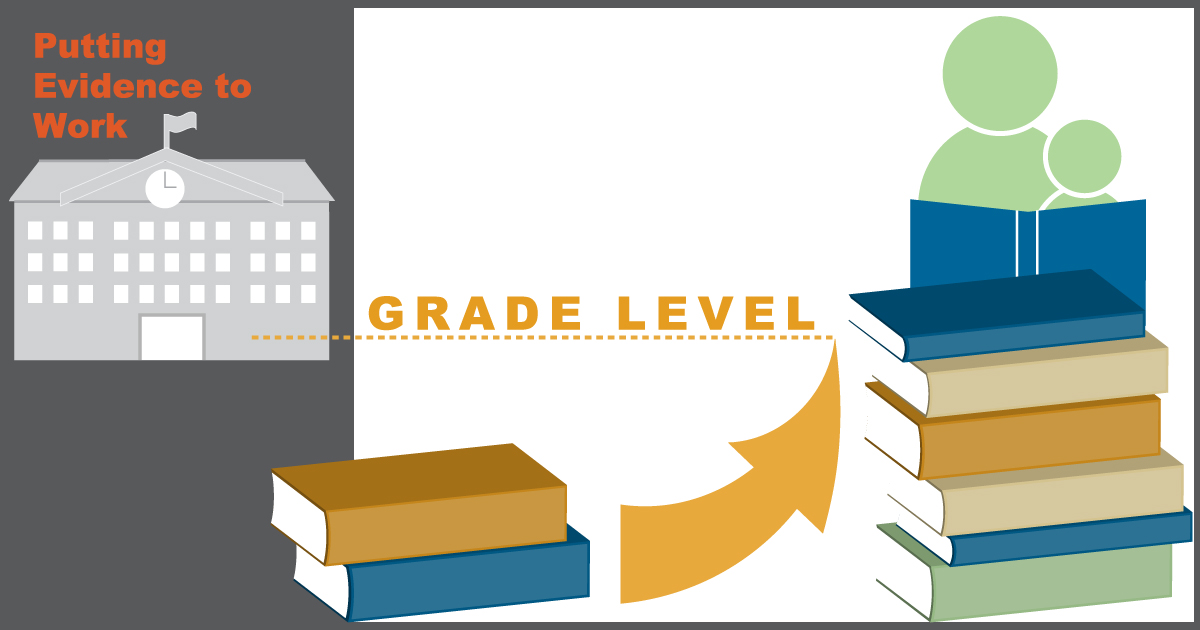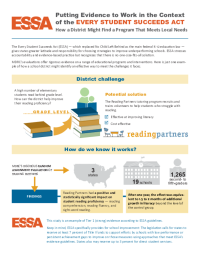One-on-One Tutoring Provided by Community Volunteers
Putting Evidence to Work in the Context of the Every Student Succeeds Act
How a District Might Find a Program That Meets Local Needs

 |
Putting Evidence to Work in the Context of the EVERY STUDENT SUCCEEDS ACT |
| How a District Might Find a Program That Meets Local Needs |
|
The Every Student Succeeds Act (ESSA) — which replaced No Child Left Behind as the main federal K-12 education law — gives states greater latitude and responsibility for choosing strategies to improve underperforming schools. ESSA stresses accountability and evidence-based practice but recognizes that there is no one-size-fits-all solution. MDRC’s evaluations offer rigorous evidence on a range of educational programs and interventions. Here is just one example of how a school district might identify an effective way to meet the challenges it faces. |
| District challenge |
 |
Potential solution The Reading Partners tutoring program recruits and trains volunteers to help students who struggle with reading.
|
| How do we know it works? |
|
 |
| Reading Partners had a positive and statistically significant impact on student reading proficiency — reading comprehension, reading fluency, and sight-word reading. | After one year, the effect was equivalent to 1.5 to 2 months of additional growth in literacy beyond the level of the control group. |
 |
This study is an example of Tier 1 (strong) evidence according to ESSA guidelines. Keep in mind, ESSA specifically provides for school improvement: The legislation calls for states to reserve at least 7 percent of Title I funds to support efforts by schools with low performance or persistent achievement gaps to improve on those measures using approaches that meet ESSA’s evidence guidelines. States also may reserve up to 3 percent for direct student services. More about the use of Title I funds under ESSA: See pp. 3-4, Sections 1003 and 1003A |
|
Are you targeting low-performing subgroups? Educational equity for historically underserved students is a critical goal of ESSA. The act lays out accountability expectations for economically disadvantaged students, students from different racial and ethnic backgrounds, children with disabilities, and English language learners, and set-aside funds may be used for targeted support and improvement for schools with low-performing student subgroups. FAQs about accountability under ESSA More about monitoring the performance of student subgroups |
|
|
| Evidence is great! The program has been proven to increase student reading ability . . . but is it a fit for your district? |
|
Here are some other factors to consider:
|
|
Looking for more evidence to inform your district decisions? Sign up to stay informed about research on other educational programs and interventions. |







